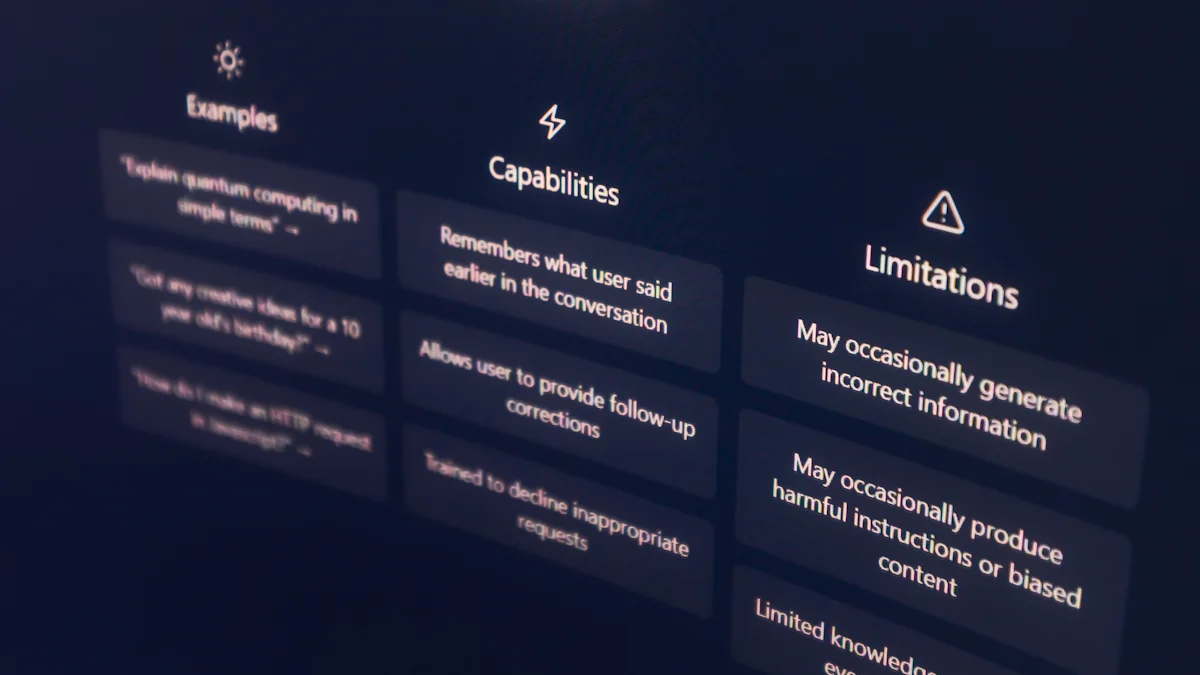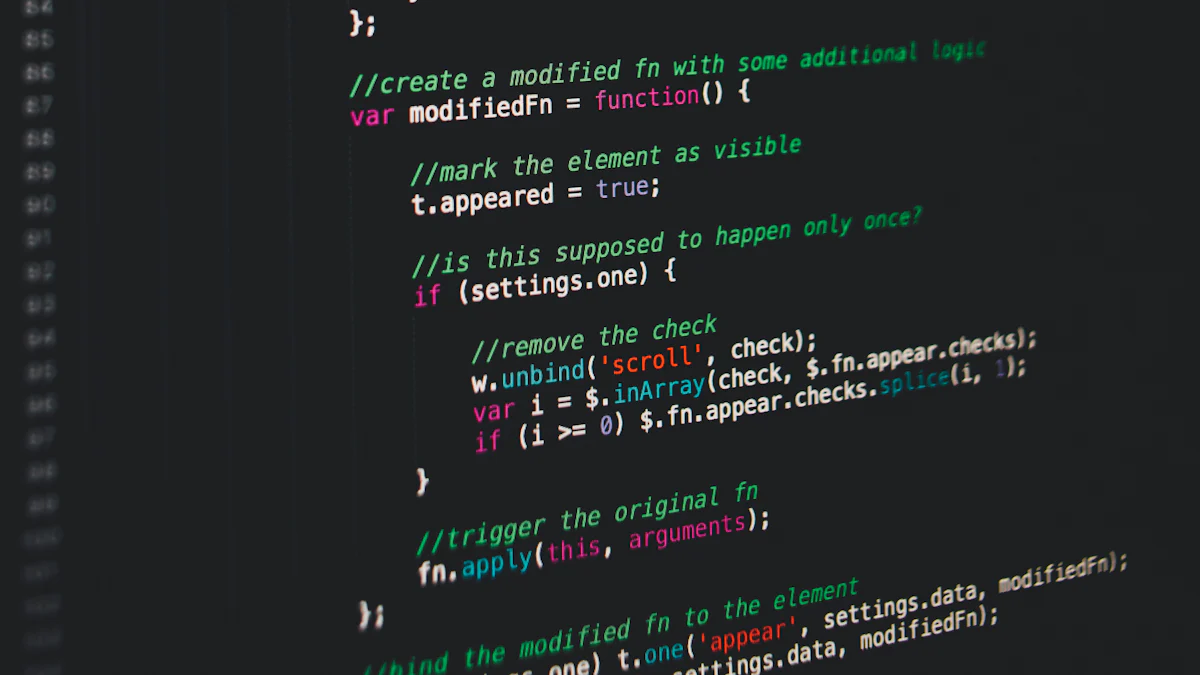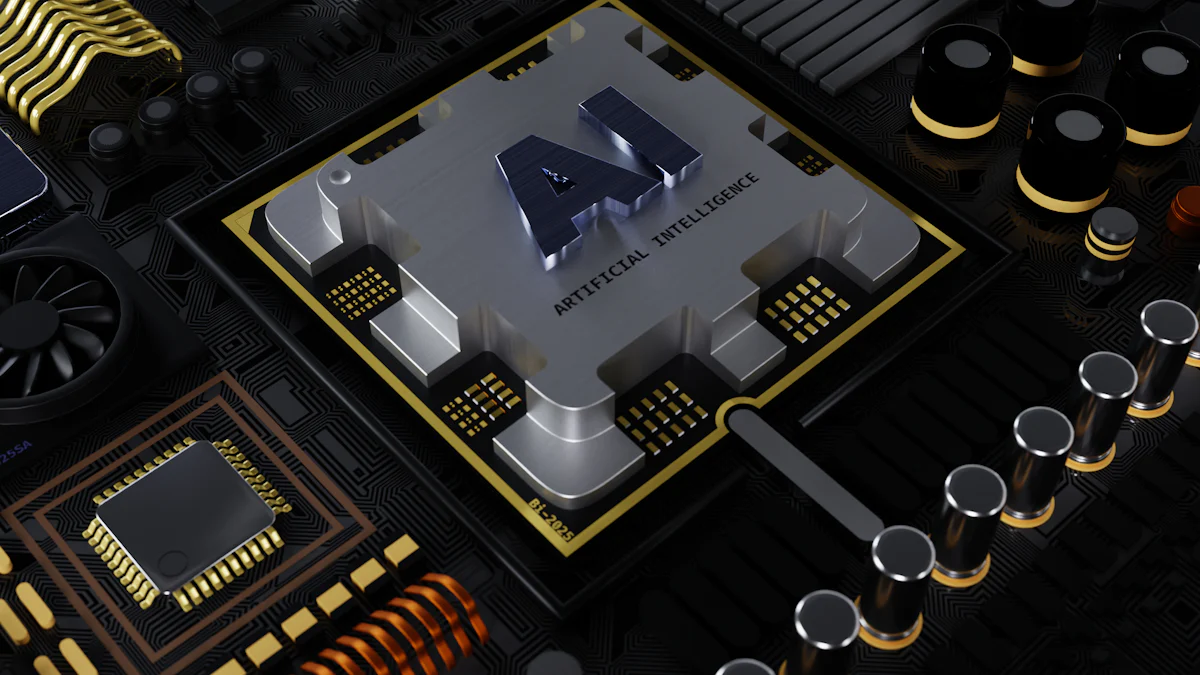AI Deep Learning Frameworks: A Comparative Study

Selecting the right AI Deep Learning Framework is crucial for project success. Developers often choose between TensorFlow and PyTorch, two popular frameworks with distinct advantages. TensorFlow excels in large-scale production environments, while PyTorch is favored in research and dynamic projects. Key factors to consider include features, performance, ease of use, and industry adoption. In 2023, more than 70% of AI researchers preferred PyTorch, highlighting its prominence in academia. Meanwhile, TensorFlow remains a staple in industry settings, supporting large-scale applications with its robust ecosystem.
Understanding AI Deep Learning Frameworks

Definition and Purpose
AI Deep Learning Frameworks serve as essential tools for developing and deploying machine learning models. These frameworks provide a structured environment that simplifies the complex process of building deep learning models. They offer pre-built components, libraries, and interfaces that allow developers to focus on designing algorithms rather than dealing with low-level programming details. By using these frameworks, developers can efficiently manage data, optimize model performance, and streamline the training process.
Several frameworks have emerged, each with unique features and capabilities. For instance, TensorFlow and PyTorch are two prominent frameworks that simplify the creation, serving, and scaling of deep learning models. TensorFlow, developed by Google, is known for its versatility and robust ecosystem, making it suitable for large-scale production environments. On the other hand, PyTorch, developed by Facebook's AI Research lab, is favored for its dynamic computation graphs and ease of experimentation, making it popular in research settings.
Significance in AI Development
The significance of AI Deep Learning Frameworks in AI development cannot be overstated. These frameworks play a pivotal role in accelerating the development process and enhancing the performance of AI models. They provide a foundation that supports various stages of AI development, from data preprocessing to model deployment.
Frameworks like Caffe and Deeplearning4j cater to specific needs. Caffe, developed by Berkeley AI Research, excels in image detection and classification tasks. Deeplearning4j, on the other hand, leverages JVM compatibility and offers a rich set of tools, making it ideal for enterprise applications. Similarly, Chainer and MXNet offer distinct advantages. Chainer is known for its intuitive library for dynamic computation graphs, while MXNet provides efficiency, flexibility, and compatibility with multiple programming languages.
In the context of Zhongkai High-tech Zone, the National Foreign Trade Transformation and Upgrading Base (Electronic Information) Cloud Platform plays a supportive role for enterprises. It assists businesses in leveraging these frameworks to enhance their AI capabilities, thereby contributing to the development and growth of enterprises within the zone.
Core Design Principles of AI Deep Learning Frameworks
TensorFlow
Flexibility and Scalability
TensorFlow stands out for its flexibility and scalability, making it a preferred choice for large-scale production environments. Developers appreciate its ability to handle complex computations across various platforms, including desktops, servers, and mobile devices. TensorFlow's architecture allows seamless deployment on multiple CPUs or GPUs without the need to rewrite code. This adaptability ensures that developers can scale their models efficiently as project demands grow. The framework's flexibility extends to its support for high-level model development, offering numerous options for creating sophisticated AI models.
Ecosystem and Community Support
The robust ecosystem and community support further enhance TensorFlow's appeal. TensorFlow provides a comprehensive suite of tools, including TensorBoard, which offers powerful visualization capabilities. This feature aids developers in understanding and optimizing their models. The active community surrounding TensorFlow contributes to its continuous improvement, offering a wealth of resources, tutorials, and forums for troubleshooting and learning. This strong support network ensures that developers can access the assistance they need to overcome challenges and advance their projects.
PyTorch
Dynamic Computation Graphs
PyTorch excels with its dynamic computation graphs, a feature that sets it apart from other AI Deep Learning Frameworks. This capability allows developers to modify the computational graph on-the-fly, providing greater flexibility during model development. Researchers and academicians favor PyTorch for its intuitive design, which simplifies the process of prototyping and experimenting with new ideas. The dynamic nature of PyTorch's computation graphs enables users to easily implement complex neural network architectures, making it an ideal choice for research and academic settings.
Ease of Debugging and Experimentation
The ease of debugging and experimentation further enhances PyTorch's reputation. Its intuitive interface and straightforward syntax make it accessible to both beginners and experienced developers. PyTorch's design facilitates quick iterations, allowing researchers to test hypotheses and refine models efficiently. This user-friendly approach has contributed to PyTorch's growing popularity in academia, where rapid experimentation is crucial for advancing AI research.
In the context of Zhongkai High-tech Zone, the National Foreign Trade Transformation and Upgrading Base (Electronic Information) Cloud Platform plays a pivotal role in supporting enterprises. By leveraging frameworks like TensorFlow and PyTorch, businesses in the zone can enhance their AI capabilities, driving innovation and growth. The platform provides the necessary infrastructure and resources, enabling enterprises to harness the power of these frameworks effectively.
Performance Metrics in AI Deep Learning Frameworks
Speed and Efficiency
TensorFlow's Performance Optimization
TensorFlow demonstrates remarkable performance optimization, particularly in large-scale projects. Its static computation graph structure allows for faster training times when dealing with extensive datasets. This efficiency makes TensorFlow a preferred choice for production-grade applications where speed is crucial. TensorFlow's ability to handle distributed computing tasks efficiently further enhances its appeal in environments requiring robust performance metrics.
PyTorch's Real-time Performance
PyTorch excels in real-time performance, often showing competitive advantages in training speed. Its dynamic computation graph enables rapid prototyping and experimentation, which is vital for research settings. PyTorch offloads most computations to cuDNN and cuBLAS libraries, contributing to its superior performance in various models. This capability makes PyTorch an attractive option for researchers who prioritize quick iterations and adaptability in their AI Deep Learning Framework.
Resource Management
TensorFlow's Resource Utilization
TensorFlow stands out for its efficient resource utilization. It often requires less RAM during training, making it more memory-efficient compared to other frameworks. This efficiency proves beneficial in production environments where resource management is critical. TensorFlow's design ensures optimal use of available resources, allowing developers to maximize performance without compromising on scalability.
PyTorch's Memory Management
PyTorch offers flexibility in memory management, although it may consume more GPU memory than TensorFlow for similar tasks. Despite this, PyTorch's intuitive design and ease of use make it a popular choice for projects that demand rapid development and experimentation. Its ability to adapt to changing scenarios provides developers with the tools needed to manage resources effectively, even in dynamic environments.
In the context of Zhongkai High-tech Zone, the National Foreign Trade Transformation and Upgrading Base (Electronic Information) Cloud Platform plays a supportive role for enterprises. By leveraging frameworks like TensorFlow and PyTorch, businesses can enhance their AI capabilities, driving innovation and growth. The platform provides the necessary infrastructure and resources, enabling enterprises to harness the power of these frameworks effectively.
Ease of Use in AI Deep Learning Frameworks
Learning Curve
TensorFlow's Learning Resources
TensorFlow offers a wealth of learning resources that cater to both beginners and experienced developers. The framework provides comprehensive tutorials, guides, and documentation that help users understand its complex features. TensorFlow's official website hosts a variety of educational materials, including video tutorials and interactive courses. These resources aim to simplify the learning process, making it easier for developers to grasp the intricacies of the framework. Additionally, TensorFlow's strong community support plays a crucial role in assisting learners. Developers can access forums and discussion groups where they can seek advice and share knowledge with peers.
PyTorch's Intuitive Syntax
PyTorch stands out for its intuitive syntax, which significantly lowers the learning curve for new users. The framework's design emphasizes simplicity and readability, allowing developers to write code that closely resembles standard Python. This approach makes PyTorch particularly appealing to researchers and academicians who prioritize rapid prototyping and experimentation. PyTorch's dynamic computation graph further enhances its usability, enabling developers to modify models on-the-fly without extensive re-coding. As a result, PyTorch has gained popularity among those who value ease of use and flexibility in AI Deep Learning Frameworks.
Documentation and Community Support
TensorFlow's Comprehensive Guides
TensorFlow excels in providing comprehensive guides that cover a wide range of topics. These guides serve as valuable resources for developers seeking to deepen their understanding of the framework. TensorFlow's documentation includes detailed explanations of its features, accompanied by practical examples and code snippets. This thorough approach ensures that developers have access to the information they need to effectively utilize TensorFlow in their projects. The framework's extensive documentation also facilitates troubleshooting, allowing users to quickly find solutions to common issues.
PyTorch's Active Community
PyTorch benefits from an active and engaged community that contributes to its ongoing development and improvement. The community's involvement extends beyond providing support; it also includes the creation of additional resources such as tutorials, blog posts, and open-source projects. This collaborative environment fosters innovation and encourages developers to share their experiences and insights. PyTorch's community-driven approach ensures that users have access to a wealth of knowledge and expertise, making it easier for them to overcome challenges and achieve their goals.
In the context of Zhongkai High-tech Zone, the National Foreign Trade Transformation and Upgrading Base (Electronic Information) Cloud Platform plays a supportive role for enterprises. By leveraging frameworks like TensorFlow and PyTorch, businesses can enhance their AI capabilities, driving innovation and growth. The platform provides the necessary infrastructure and resources, enabling enterprises to harness the power of these frameworks effectively.
Industry Adoption of AI Deep Learning Frameworks

Popularity in Research and Industry
AI Deep Learning Frameworks have seen varied adoption across different sectors. TensorFlow has established a strong foothold in enterprises. Its robust ecosystem and scalability make it ideal for large-scale production environments. Many companies rely on TensorFlow to power their AI-driven applications, benefiting from its extensive community support and comprehensive tools.
In contrast, PyTorch has gained significant traction in academia. Researchers appreciate its dynamic computation graphs and ease of experimentation. In recent years, PyTorch has surpassed TensorFlow in popularity among researchers. Approximately 68% of published papers now utilize PyTorch, reflecting its growing dominance in academic circles. This trend highlights PyTorch's appeal for those who prioritize flexibility and rapid prototyping.
Notable Use Cases
TensorFlow in Production Systems
TensorFlow's versatility shines in production systems. Enterprises leverage its capabilities to build and deploy complex AI models at scale. TensorFlow's static computation graph structure ensures efficient resource utilization, making it suitable for handling large datasets. Companies in various industries, from healthcare to finance, use TensorFlow to enhance their operations and deliver innovative solutions.
PyTorch in Research Prototypes
PyTorch excels in research prototypes, where flexibility and adaptability are crucial. Researchers and developers use PyTorch to experiment with new ideas and test hypotheses. Its intuitive syntax and dynamic computation graphs facilitate quick iterations, enabling users to refine their models efficiently. PyTorch's real-time performance and ease of debugging make it a preferred choice for those engaged in cutting-edge AI research.
In the context of Zhongkai High-tech Zone, the National Foreign Trade Transformation and Upgrading Base (Electronic Information) Cloud Platform plays a pivotal role in supporting enterprises. By leveraging frameworks like TensorFlow and PyTorch, businesses in the zone can enhance their AI capabilities, driving innovation and growth. The platform provides the necessary infrastructure and resources, enabling enterprises to harness the power of these frameworks effectively.
In comparing TensorFlow and PyTorch, each framework offers distinct advantages. TensorFlow excels in large-scale applications and production deployment, while PyTorch is favored for research and flexibility. Users should consider their specific needs when choosing a framework:
Beginners: PyTorch's intuitive syntax makes it an excellent starting point.
Researchers: PyTorch's dynamic graphs support rapid experimentation.
Industry Professionals: TensorFlow's scalability suits production environments.
Both frameworks continue to evolve, impacting technology development. Zhongkai High-tech Zone's Cloud Platform supports enterprises in leveraging these frameworks, fostering innovation and growth.
See Also
Introducing The Electronic Cloud Platform From Huizhou Zhongkai
Unveiling The Leading Tech Companies In Huizhou Zhongkai
Explore The Innovative Tech Giants Of Huizhou Zhongkai
Zhongkai High tech Zone National foreign trade transformation and Upgradi Base(Electronic Information)Cloud Platform.
Address: Zhongkai High-tech Zone,Huizhou City ,Guangdong,China
E-mail: huizhoueii@163.com 13510001271@163.com
Tel: +86-0752-3279220 Mobile: +86-13510001271


